- Supermassive Black Holes: Extremely large black holes (millions to billions of solar masses) located at the centers of most galaxies.
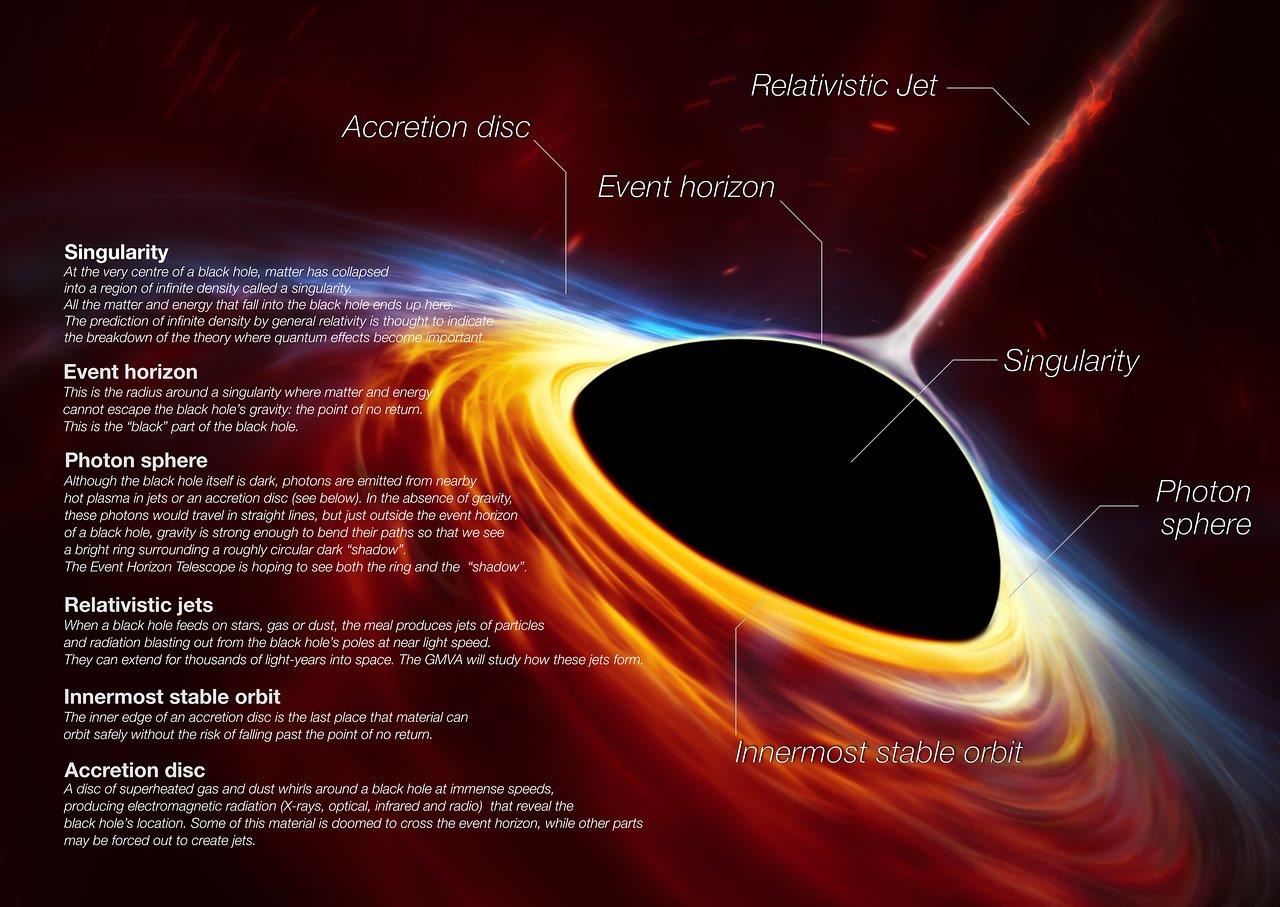
- Gravitational Lensing: Bending of light caused by the intense gravitational field of a massive galaxy or cluster of galaxies.
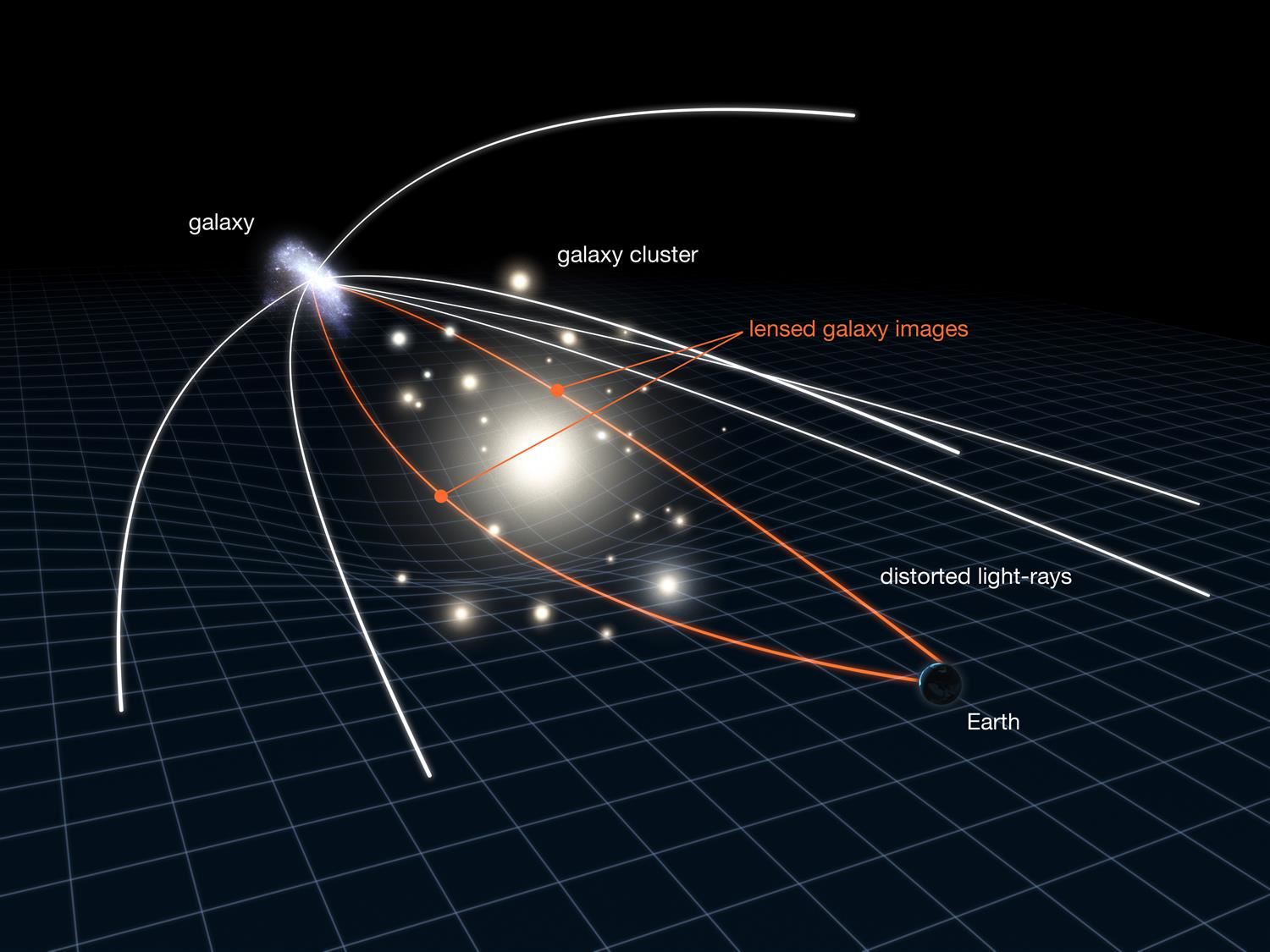
- Einstein Rings: A gravitational lens that creates a circular ring of light from a background light source.
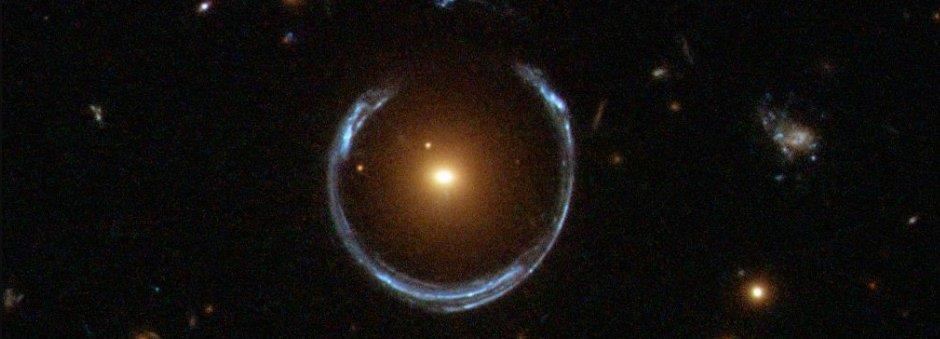
- Doppler Shift: The change in the wavelength of light due to the relative motion of an object.
- When an object moves away from us, its light is "stretched" to longer wavelengths, causing a redshift.
- When an object moves toward us, its light is "compressed" to shorter wavelengths, causing a blueshift.
- Redshift and the Expanding Universe:
- Light from far-off galaxies appears extremely redshifted, indicating that the universe is expanding.
- Blueshift and Nearby Galaxies:
- Some nearby galaxies (Andromeda) show a blueshift in their light because they move toward us due to local gravity pulling the galaxies together.

Types of Galaxies and Their Features
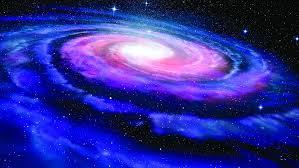
1. Spiral Galaxies
-
- Shape: Flat, disk-shaped galaxies with spiral arms extending from the center.
- Features: Contains stars, gas, and dust; young stars in the arms; older stars in the center.
Most spiral galaxies also have supermassive black holes at their centers. - Arms: Made up of gas, dust, and nebulae where young, bright stars are forming.
- Subtypes:
- Barred Spiral Galaxies: Have a central bar structure from which the spiral arms emerge.
- Ordinary Spiral Galaxies: Arms emerge directly from the central nucleus without a bar.


2. Elliptical Galaxies
-
- Shape: Range from nearly spherical to very elongated.
- Star Composition: Primarily older, low-mass stars with little to no active star formation.
- Gas and Dust: Minimal interstellar medium, resulting in limited star formation.
- Supermassive Black Holes: Larger elliptical galaxies often have the largest supermassive black holes in their centers! They have consumed billions of solar systems!
3. Peculiar Galaxies
-
- Shape: Unusual structures or features caused by gravitational interactions, mergers, or active galactic centers.
- Types:
- Interacting Galaxies: Two or more galaxies affecting each other’s shapes (e.g., Antennae Galaxies).
- Starburst Galaxies: Intense star formation triggered by collisions or gravitational forces.
4. Irregular Galaxies
-
- Shape: No distinct or defined structure.
- Composition: High amounts of gas and dust lead to active star formation.
- Origin: Often distorted due to gravitational interactions or collisions with other galaxies.
- Supermassive Black Holes: Rare, as irregular galaxies tend to be smaller and less massive.
Edwin Hubble invented a classification system for galaxies, dividing them into four main classes: spirals, barred spirals, ellipticals, and irregulars.
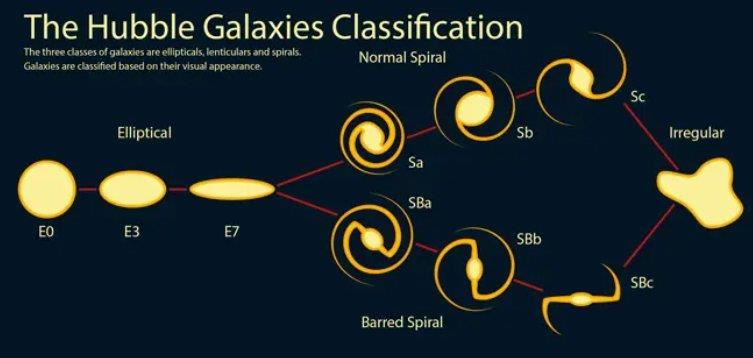
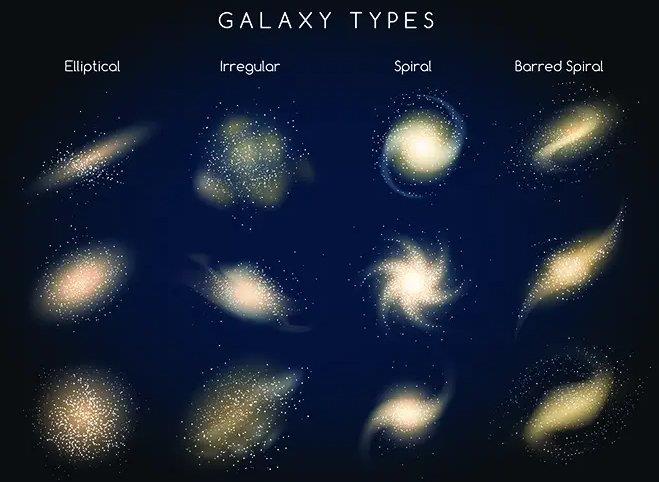
Key Ideas:
- Younger stars dominate spiral galaxies, while elliptical galaxies have older stars.
- Spiral and irregular galaxies have significant gas and dust, enabling star formation. Elliptical and lenticular galaxies have little.
- Galaxy collisions can transform galaxies, leading to new shapes or bursts of star formation.
Astronomer Edwin Hubble pioneered the study of galaxies based on their appearance and categorized them according to three basic shapes: spiral, elliptical, and irregular. Some 60 years later, the sharp vision of the space telescope named in his honor began revealing unprecedented details in galaxies, revealing intricate, dark dust lanes and glowing knots of star formation. Hubble helped uncover the supermassive black holes that power the bright centers of massive galaxies and revealed the interdependent relationship black holes have with their host galaxy.
Hubble has also captured merging galaxies that look like a “Great Pumpkin,” a “Space Triangle,” “Antennae,” and “Mice.” For all their violence, galactic collisions take place at a snail’s pace – over timescales that span several hundred million years. Hubble captures a mere snapshot of these mergers.
Hubble images of the “tadpole-like” Antennae and Mice galaxies reveal the gravitational turbulence these galaxies endure. The interacting duo called Arp 143 (the “Space Triangle”) holds a pair of distorted, star-forming spiral galaxies. Astronomers think the pair passed through each other, igniting a triangular firestorm of new stars.
Mergers like this one preview the collision between our Milky Way and the neighboring Andromeda galaxy, which will occur four billion years from now.
The “Antennae Galaxies,” NGC 4038 and 4039, are spiral galaxies in the process of merging. The bright knots in the bluish areas are massive pockets of young star clusters whose formation was sparked by the turbulent interaction of the galaxies. Credit: NASA, ESA and G. Bacon (STScI)
https://science.nasa.gov/mission/hubble/science/science-highlights/galaxy-details-and-mergers/
And now we can begin your project on Galaxies!



